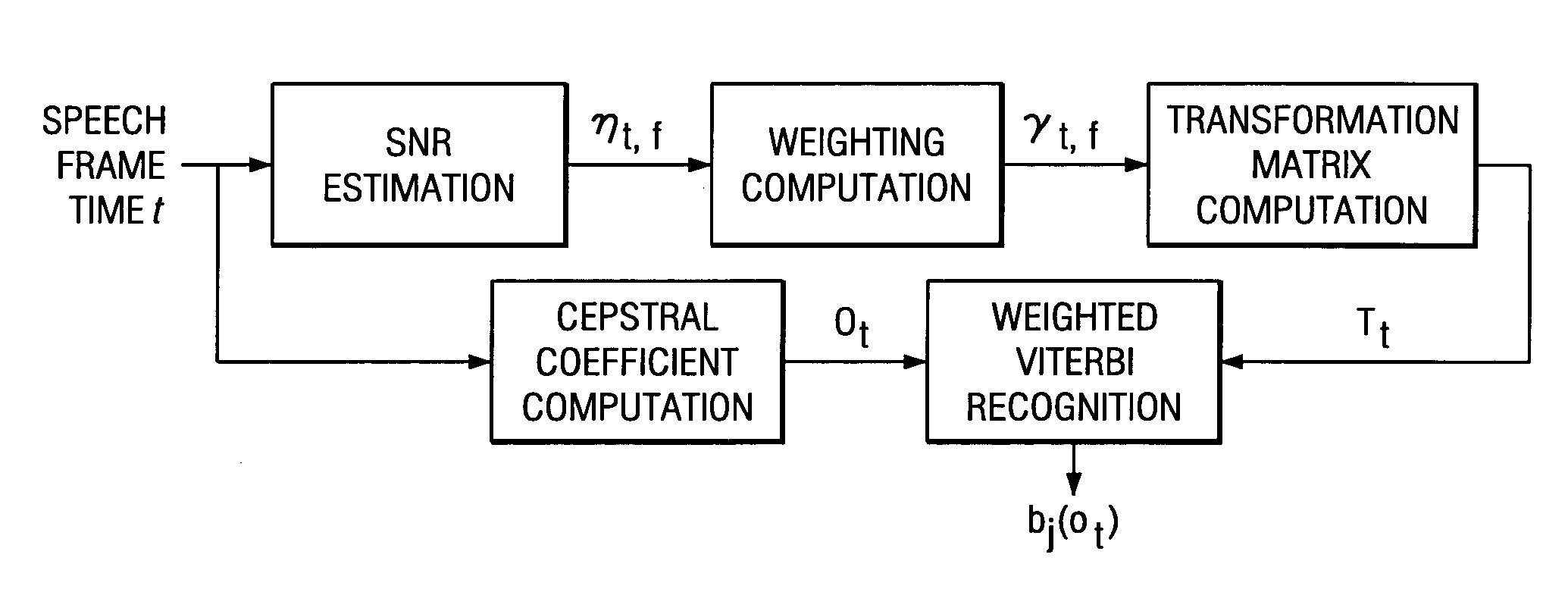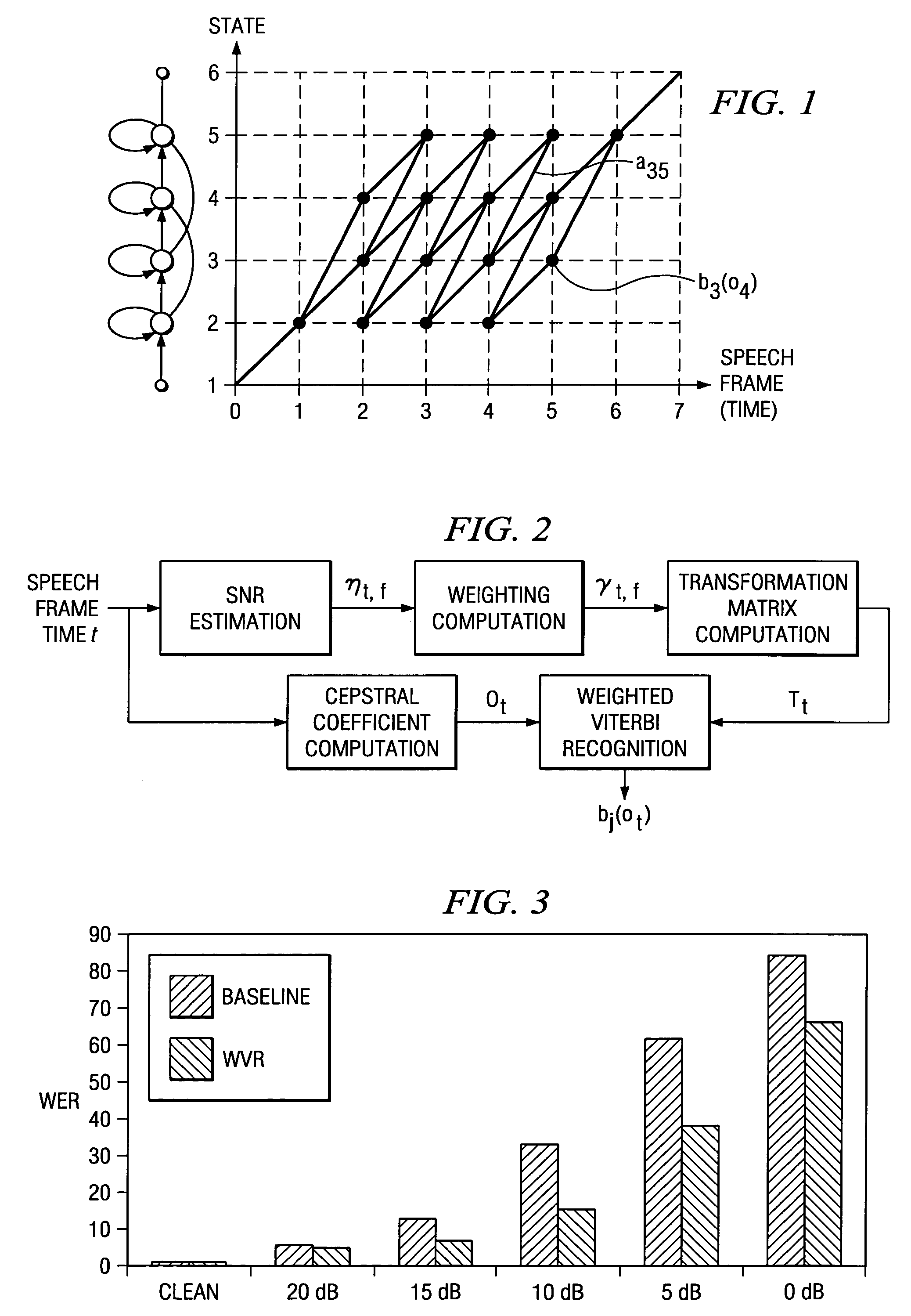Middle-end solution to robust speech recognition
a speech recognition and middle-end technology, applied in the field of speech recognition, can solve problems such as significant reduction of recognition performan
- Summary
- Abstract
- Description
- Claims
- Application Information
AI Technical Summary
Problems solved by technology
Method used
Image
Examples
Embodiment Construction
Review of Time Weighted Viterbi Recognition
[0011]In general, there are two related approaches to solve the temporal alignment problem with HMM speech recognition. The first is the application of dynamic programming or Viterbi decoding, and the second id the more general forward / backward algorithm. The Viterbi algorithm (essentially the same algorithm as the forward probability calculation except that the summation is replaced by a maximum operation) is typically used for segmentation and recognition and the forward / backward for training. See for the Viterbi algorithm G. D. Forney, “The Viterbi algorithm,” IEEE Transactions on Communications, vol. 61, no. 3, pp. 268-278, April 1973.
[0012]The Viterbi algorithm finds the state sequence Q that maximizes the probability P* observing the features sequence (O=o1, . . . oT) given the acoustic model λ
[0013]P*=maxAllQP(Q,O❘λ).(1)
[0014]In order to calculate P* for a given model λ, we define the metric φj(t), which represents the maximum li...
PUM
 Login to View More
Login to View More Abstract
Description
Claims
Application Information
 Login to View More
Login to View More - R&D
- Intellectual Property
- Life Sciences
- Materials
- Tech Scout
- Unparalleled Data Quality
- Higher Quality Content
- 60% Fewer Hallucinations
Browse by: Latest US Patents, China's latest patents, Technical Efficacy Thesaurus, Application Domain, Technology Topic, Popular Technical Reports.
© 2025 PatSnap. All rights reserved.Legal|Privacy policy|Modern Slavery Act Transparency Statement|Sitemap|About US| Contact US: help@patsnap.com



